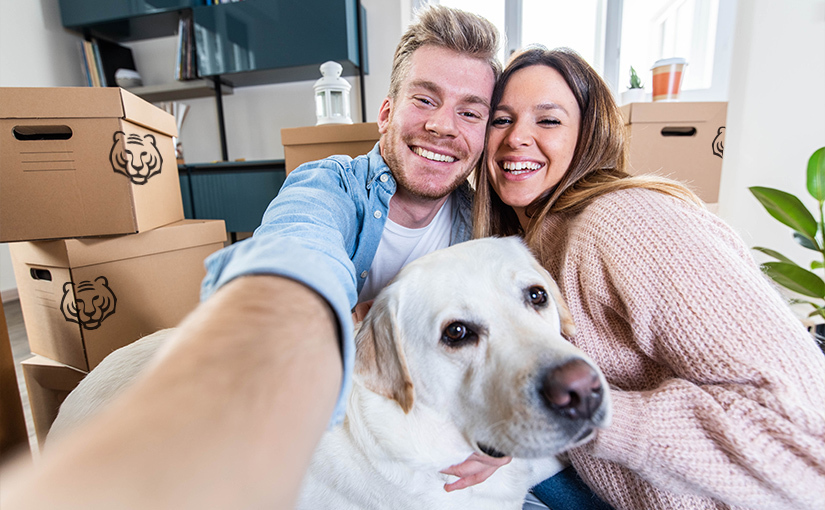Moving Abroad with a Dog: Guide to a Pawsitive Experience!
Moving to a new country can be exciting, yet daunting, especially if you are moving abroad with your dog. As he is a part of the family, it goes without saying that you would want to have him kept comfortable and safe during the move. This guide lays down every essential to ensure the transition happens in the smoothest and most hassle-free way possible for both you and your dog.
Preparation is Key
Find out about Destination’s Regulations on Importing Pets
Before you start packing, there is a need to find out about the destination country’s requirement for pet import. There are varying rules in different countries regarding vaccination, quarantine periods, and even breed restrictions. Some necessitate vaccinations for the pet, microchipping, or blood tests months before the move. Adherence to this might be faulty, resulting in delays or even denial of entry to your dog.
See the Vet
Before taking your dog with you to another country, it is necessary to visit the vet. Your vet checks on your dog’s condition and confirms the vaccinations set for it. Your vet may also provide you with a health certificate, which is often needed for international move. This is always a good opportunity to bring up and discuss all issues concerning the move that you are worried about, such as how to reduce your dog’s stress during traveling.
Microchip Your Dog
If your dog is not yet microchipped, do this. The requirement of most countries before one’s pet can enter their territories is that it should be fitted with an ISO-compliant microchip. A microchip gives a permanent form of identification that will help you and your dog to be reunited in case they get lost during a move.
Get a Pet Passport
Some countries, like the European Union, require a so-called pet passport. This document contains data on your dog’s vaccinations, its microchip number, and health condition. A pet passport is brilliant while moving abroad with a dog, especially in case of trips to several countries.
Choosing the Right Way of Traveling
Air Travel with Your Dog
While flying is very practical for moving a dog abroad, careful planning is required. If your dog is small enough, he can even fly in the cabin with you. However, dogs that are larger must fly in the cargo area. When booking a flight, use a pet-friendly airline that has a good reputation in handling animals. Note that airlines vary with respect to specific pet travel requirements .
Your Dog’s Travel Crate
This is basically your dog’s home away from home in the course of this journey, so picking the right one is important. The crate needs to be large enough for your dog to stand, turn around, and lie down comfortably. It must also be well-ventilated and secure. Also, make your crate as comfortable as possible by lining it with absorbent bedding. You should also add one or two favorite toys or your blanket with a familiar smell of home. You can also want to mark the crate with your contact information and include a “Live Animal” sign just to make sure that your dog will be treated with care.
Ground Transport Options
If flying isn’t possible, or if you’re looking for a more gradual change, ground transport may be the best solution when moving abroad with a dog. This would entail driving your dog to your destination or using a professional service that holds pet relocation services. Ground transport is not as stressful for some dogs because of the possibility of more breaks and leg-stretches along the way.
Moving Day
Keeping Stress at Bay for Your Dog
Moving day will be stressful on your dog. The best way to combat this is to give him as much normalcy as possible. Stick to routine as much as you can; let him have favorite toys and bedding nearby. If your dog has anxiety, speak with your vet about your options for calming aids such as anxiety wraps, calming supplements, or even prescribed medications. On the way, speak with your dog in a very gentle and reassuring voice to let them know it’s all okay.
Feeding and Hydration
Before the journey, give your dog a light meal some hours before the journey to prevent stomach upset. Always give them a little water in advance; however, do not give them too much prior to leaving to minimize the frequency of stops on the way. If your dog travels in a crate, fasten a pet water bottle to the door of their crate to keep them hydrated.
Airport and Customs Procedures
If you are traveling by air, be sure to get to the airport with some time to spare to accommodate the check-in and security process. Your dog’s crate will need to pass through security; thus, you should be ready to remove your dog from the crate for this procedure. After you have arrived, you will need to pass through customs. The authorities will need to look through your dog’s papers, so if you keep them well organized and easily accessible, this process will be much easier.
Making Your New House a Home
Helping Your Dog Get Adjusted
Moving abroad with a dog doesn’t end when you arrive at your new home. The adjustment period is actually only beginning. No doubt, your dog will be confused, possibly even anxious, in this new environment. Try to ease them into settling in by creating familiarity around them. Try arranging their bed, toys, and food and water bowls in some calm area of the house where they could retire if they feel overwhelmed.
Setting Up Routine
Dogs do love routine, and the sooner you can establish a new daily routine, the better. This includes meal times, walks, and playtime. Familiar routines will help your dog feel more secure in their new surroundings. Take them for walks around the neighborhood so they may get accustomed to the various sights and smells around this new place.
Finding a New Veterinarian
One of the priorities immediately after moving abroad with a dog is to find a new vet. Get some recommendations from locals or search on the Internet for veterinary clinics in the area. Make the first appointment with the vet to check everything, so that he knows your pet and your dog’s medical records will be updated. It is also a good idea to know the nearest after-hours emergency vet clinic if some unexpected health issue happens.
Socializing Your Dog
If your dog enjoys socializing with other dogs, find a local dog park or join dog walking groups. Your dog will be able to get the exercise he needs to spend pent-up energy while making new friends in the process. This may be especially true if your dog is still getting used to the move; now, more than ever, it will help him reduce anxiety and be more generally extensible.
Conclusion
While moving abroad with a dog does need some careful planning and consideration, it can be quite the pawsitive experience for both you and your furry friend if you’re well-prepared. Provided the right kind of preparation on regulations, travel method, and how to help your dog settle into his new home, you are assured of making this transition smoothly and having an awesome beginning in life’s new chapter.










